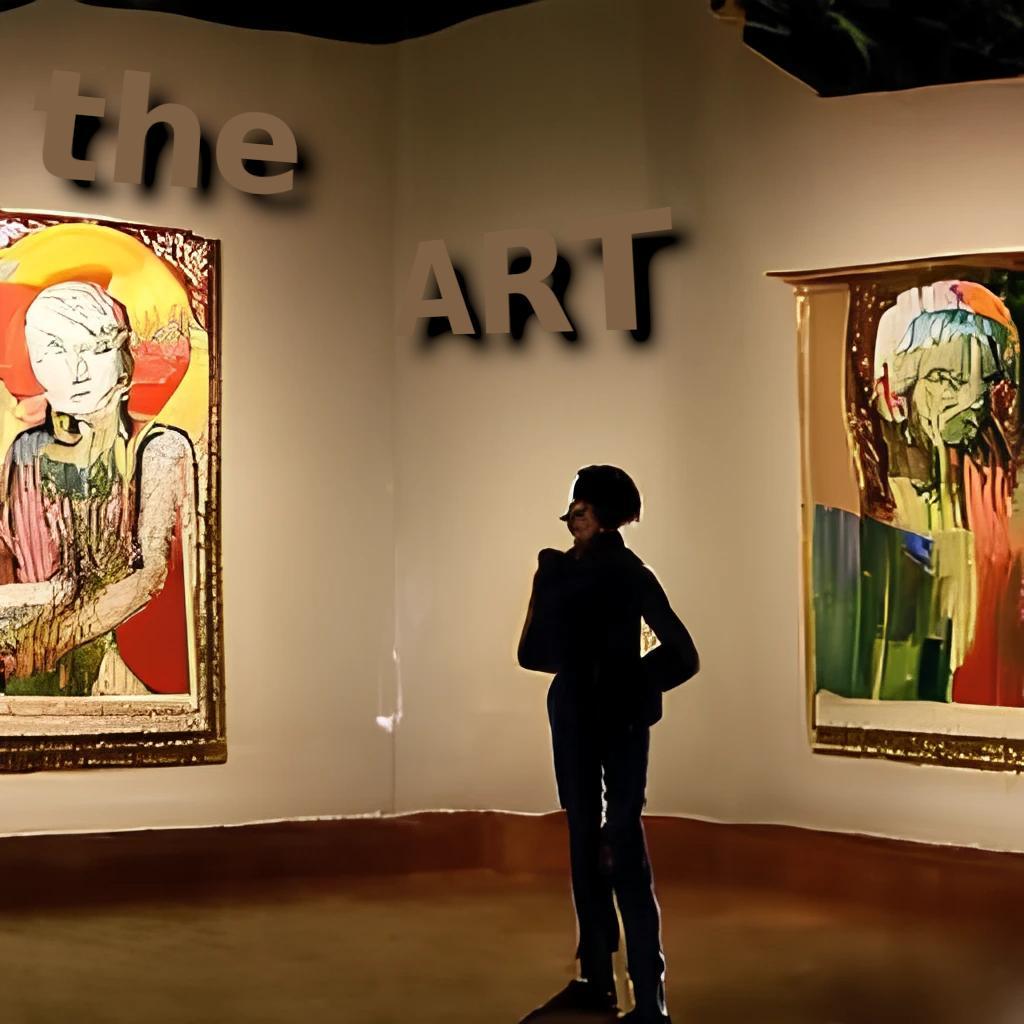


Art education stands as a beacon in the realm of learning, fostering creativity, self-expression, and a profound appreciation for the visual and performing arts. It goes beyond teaching techniques; it cultivates an understanding of culture, history, and the human experience. In this exploration of art education, we will delve into its importance, the multifaceted benefits it brings, and practical tips for individuals, educators, and communities invested in the transformative power of the arts.
The Importance of Art Education.
Cultivating Creativity:
Art education is a catalyst for creativity. It encourages individuals to think beyond boundaries, explore unconventional ideas, and express themselves through various artistic mediums. Cultivating creativity is not only vital for the arts but also serves as a valuable skill in problem-solving across disciplines.
Enhancing Critical Thinking:
Engaging with art enhances critical thinking skills. Analyzing visual compositions, interpreting meanings, and understanding artistic techniques foster a capacity for critical analysis that extends beyond the art studio to other areas of academic and professional life.
Building Cultural Awareness:
Art education serves as a window into diverse cultures and histories. Through studying art, individuals gain insights into different societies, perspectives, and historical contexts. This cultural awareness contributes to fostering empathy and a more interconnected global community.
The Multifaceted Benefits of Art Education.
Emotional and Mental Well-being:
Creating art is a therapeutic outlet that promotes emotional and mental well-being. Whether through painting, drawing, or other artistic endeavors, individuals can channel their emotions, reduce stress, and find solace in the act of creation.
Improved Academic Performance:
Research suggests that students engaged in art education often demonstrate improved academic performance. The skills developed in the arts, such as focus, discipline, and creativity, contribute positively to overall academic achievement.
Fostering Collaboration and Communication:
Art projects often involve collaboration, encouraging students to work together, share ideas, and communicate effectively. These collaborative experiences mirror real-world scenarios, where teamwork and communication are essential.
Practical Tips for Art Education.
Integrating Arts Across the Curriculum:
Educators can enhance the impact of art education by integrating it across various subjects. Connecting art to science, history, literature, and other disciplines creates a holistic learning experience and reinforces the interconnected nature of knowledge.
Encouraging Experimentation:
Foster an environment that encourages experimentation and risk-taking. Art is a space for exploration, and individuals should feel free to try new techniques, styles, and forms of expression without fear of judgment.
Community Engagement:
Extend the reach of art education into the community. Collaborate with local artists, organize art exhibitions, and involve the community in art projects. Community engagement not only enriches the learning experience but also promotes a sense of cultural enrichment.
Art education is the process of learning about and practicing various forms of visual and performing arts, including painting, sculpture, music, dance, theater, and more. Art education has many aspects, including:
Technical skills: Learning the techniques and skills required to create art, such as drawing, painting, sculpting, and composing music.
Aesthetic appreciation: Understanding and appreciating the beauty and value of different forms of art.
Historical and cultural context: Understanding the historical and cultural context in which different forms of art were created, as well as the influence of different cultures on art.
Creative expression: Developing and expressing one's own ideas and emotions through art.
Critical thinking: Analyzing and interpreting art, as well as evaluating and making judgments about the quality and value of art.
Collaboration and communication: Working with others to create art, as well as communicating one's ideas and artistic vision effectively to others.
Career skills: Developing skills that can be applied in a variety of careers related to art, such as graphic design, art education, art therapy, and more.
There are several types of art schools, each with its own focus and approach to art education. Here are some of the most common types:
Fine Arts Schools: These schools focus on traditional fine arts disciplines such as painting, drawing, sculpture, printmaking, and photography.
Design Schools: These schools focus on applied art disciplines such as graphic design, fashion design, interior design, and industrial design.
Performing Arts Schools: These schools focus on performance-based art disciplines such as music, dance, theater, and film.
Media Arts Schools: These schools focus on new media art disciplines such as animation, game design, digital media, and virtual reality.
Art Institutes: These are private art schools that offer a range of art programs in various disciplines.
Community Art Schools: These schools offer art classes and workshops for all ages and levels of experience, and often serve as a community resource for art education.
Liberal Arts Colleges with Art Programs: These colleges offer a broad range of academic subjects, with a focus on the arts.
(!) Each type of art school offers unique opportunities for students to develop their skills, learn new techniques, and explore their creativity in a supportive environment.
There are both advantages and disadvantages to getting an art education instead of pursuing a different path of study. Here are some of the pluses and minuses to consider:
Advantages:
Creative fulfillment: Pursuing an art education can provide a sense of creative fulfillment and allow you to express yourself in ways that other fields may not.
Diverse range of skills: Art education can teach a wide range of skills, including critical thinking, problem-solving, communication, and collaboration, which can be useful in many careers.
Career opportunities: An art education can prepare you for careers in fields such as graphic design, fashion design, art therapy, museum curation, and more.
Personal growth: Art education can help you develop your personal voice and style, and give you a deeper understanding of yourself and others.
Disadvantages:
Limited career options: While there are many career options in the arts, some fields can be highly competitive and difficult to break into, making it challenging to find stable and consistent work.
Financial considerations: Pursuing an art education can be expensive, and careers in the arts may not always offer high-paying jobs, which can make it difficult to pay off student loans or support yourself financially.
Limited opportunities for advancement: Depending on the field, there may be limited opportunities for advancement, which can make it challenging to build a long-term career.
Perception of value: Some people may not view art education as a valuable investment, which can lead to misconceptions about the value of an art education and limited support for the arts in general.
The decision to pursue an art education depends on your interests, goals, and priorities. It's important to weigh both the advantages and disadvantages carefully before making a decision.
Art has evolved significantly over the years, and contemporary art today encompasses a wide range of styles, mediums, and themes. Some of the most innovative trends in contemporary art today include:
Digital art: With the rise of technology, digital art has become increasingly popular, with artists exploring new forms of media, such as video installations, 3D printing, and virtual reality.
Performance art: Performance art involves live performances by artists and often combines elements of theater, dance, and music to create immersive experiences.
Street art: Street art has become a global phenomenon, with artists creating large-scale murals and installations in public spaces to engage with audiences in new and unexpected ways.
Socially engaged art: Many contemporary artists are using their work as a platform to address social and political issues, using art as a tool for activism and social change.
ART has become more diverse and inclusive, with artists from a variety of backgrounds and cultures bringing their unique perspectives and experiences to their work. In the future, I expect to see even more innovative approaches to art as technology continues to advance and artists continue to explore new forms of expression.
Art education stands as a transformative force that goes beyond the canvas or stage, impacting the holistic development of individuals and communities. By recognizing the importance of creativity, understanding the multifaceted benefits of art education, and implementing practical tips for its integration, we contribute to a society that values expression, embraces diversity, and nurtures the creative spirit of every individual. Remember, art education is not just about creating artists; it's about fostering a lifelong appreciation for creativity and enriching the human experience.
Warm regards,

We use cookies
We use cookies and other tracking technologies to improve your browsing experience on our website, to show you personalized content and targeted ads, to analyze our website traffic, and to understand where our visitors are coming from. Privacy Policy.